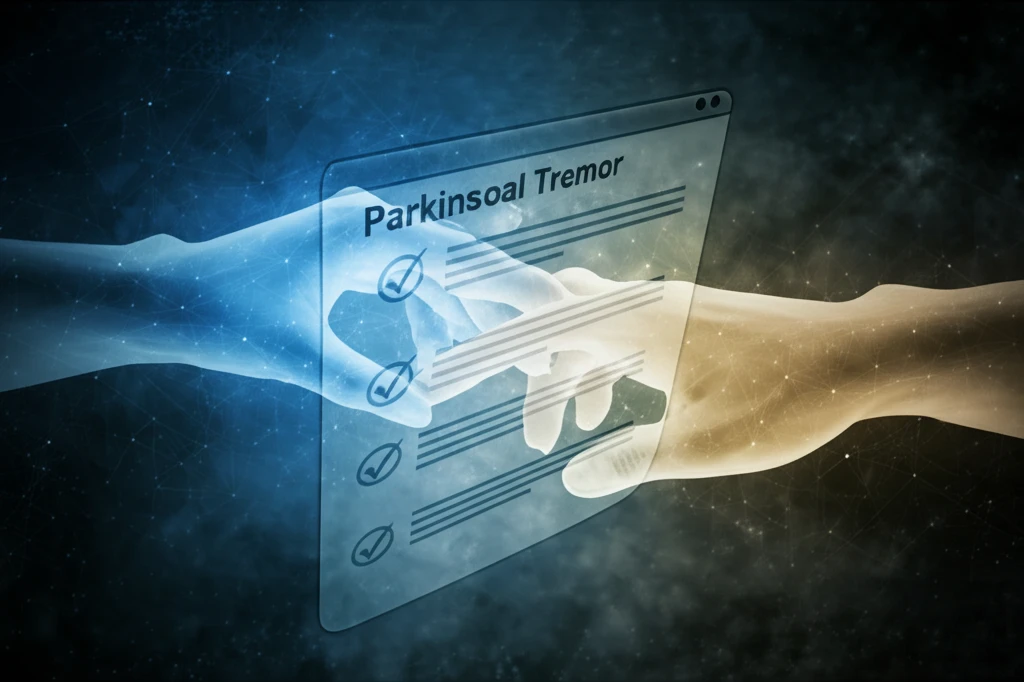
Is It Parkinson's or Essential Tremor? A Simple Questionnaire to Help Tell the Difference
"New research highlights a practical questionnaire that could aid in distinguishing between Parkinson's disease and essential tremor, offering earlier and more accurate diagnoses."
Hand tremors are a common symptom, often leading to worry and confusion. While many might immediately fear Parkinson's disease (PD), essential tremor (ET) is another frequent cause. Differentiating between the two can be challenging, but accurate diagnosis is crucial for appropriate management and peace of mind.
Traditional diagnostic methods rely heavily on neurological examinations, which can sometimes be subjective and time-consuming. Advanced techniques like dopamine transporter (DAT) imaging are highly accurate but expensive and not always readily accessible. This is why researchers are constantly seeking more accessible and reliable screening tools.
Now, a recent study published in the Journal of Clinical Neurology introduces a promising solution: a simple, questionnaire-based approach to help distinguish between PD and ET. This innovative tool could empower primary care physicians to make more informed referrals, leading to earlier and more accurate diagnoses for patients experiencing hand tremors.
The Hand Tremor Questionnaire: How It Works

The study, conducted across three movement-disorder clinics in South Korea, involved 49 participants, 24 diagnosed with Parkinson's disease and 25 with essential tremor. Researchers developed a 12-item questionnaire focusing on various aspects of hand tremors, including when they occur (resting vs. active), their symmetry (one hand vs. both), and factors that exacerbate or relieve them.
- Does your hand tremor worsen when you relax your arms?
- Does your tremor worsen when holding something or stretching your arm?
- Is the tremor more pronounced in one hand than the other?
- Did the tremor in both hands develop at same time?
- Does your hand tremor improve when you drink alcohol?
What This Means for You
The Hand Tremor Questionnaire represents a significant step forward in the diagnosis and management of hand tremors. By providing a simple, accessible screening tool, this research has the potential to reduce diagnostic delays, alleviate patient anxiety, and ensure that individuals receive the most appropriate care from the outset. If you are concerned about hand tremors, discuss this questionnaire with your doctor. Early and accurate diagnosis is key to managing both Parkinson's disease and essential tremor, improving your quality of life.
